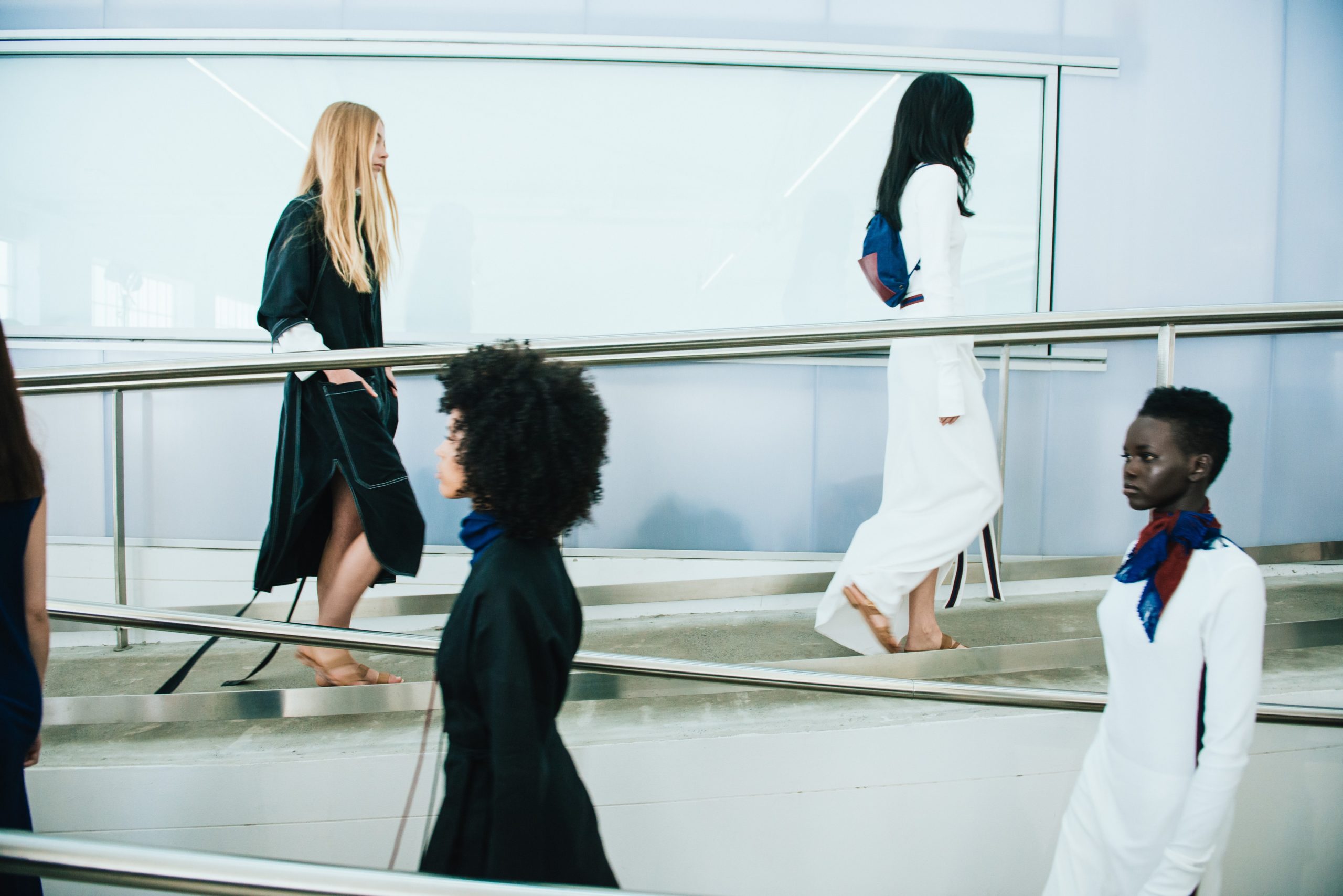[Words by Ruth Underwood (they/them)]
[Photo by Flaunter on Unsplash]
“The majority take it as axiomatic (unquestionable) that museums are full of holy relics which refer to a mystery which excludes them: the mystery of unaccountable wealth”, John Berger states in Ways of Seeing. The way high art is presented reinforces its status as belonging to the elite, whether this be paintings in galleries, music in concert halls, or fashion on the runways. If their natural home is untouchable to the majority, they can retain a sense of preciousness and exclusivity, like a holy relic.
The runway displays fashion in a way that is impossible to imitate in an intimate or laid back setting, partly because it comes with a whole load of criteria regarding the sort of person who would attend; mainly one who is wealthy. The onset of the pandemic brought several distinct challenges into play in terms of the way we view the runway: how do we make sure that viewing experiences such as runways are kept sacred when we can’t leave our personal/intimate spaces? How do we hold off from holding viewing experiences which require large audiences without having them become obsolete? Most importantly: how do we show designers’ work to its full potential without runways? In answering these questions, a technological revolution took place with the potential to transform the fashion industry into one which is more accessible and sustainable.
According to Bureau Betak founder, Alexandre de Betak, “the time to change what (fashion designers) do has finally arrived and that excites me. The fashion weeks were an old machine. That is ending. Not dying — but reborn.” To keep the runway presentation alive amid the pandemic, at a time when global fashion weeks would usually take place, luxury fashion brands transformed their runways into digital presentations. Burberry, for example, worked with photographer Nick Knight, as well as a team of animators across zoom meetings to create a CGI video of Kendall Jenner in their spring/summer designs. Kitted-out in their latest neon sportswear collection, Jenner was instructed to take photographs of herself from 360 degrees which were then moulded together digitally and put against a backdrop of branded skatepark equipment.
Similarly, Cowgirl Clue, for the introduction of her new collection, Cluewear, hosted a special runway on IMVU. Modelling her new range of coloured fur-trim jackets and animal-print boots and skirts on IMVU dolls, the runway was set between two juxtaposed settings within one specially-designed digital world: a picnic in an enchanted forest full of colourful mushrooms and flowers, and a dance party in a moonlit cave. The dreamy nature of the runway shows the designs in a setting that is specific to Clue’s style and interests as a creator, featuring fairy-like dance music, cute gaming references, and an overall taste for the enchanted. Fans of Clue’s work were able to express their love for the setup in a live chat room, making the runway more accessible and interactive.
Ziggy Chen created a short, animated video, wherein he experimented with the technique of imprinting photographic collages on fabrics. The collages combined photographs from his trip to Shanghai in 2017, where the brand’s headquarters are based, with designs from the collection. Transposed over images of fabrics used in the collection and drawings of the designs, the video showed the creative process which took the collection from its inspirations, initial materials, and colours, through to its end products and the resulting looks. The video was made available on Youtube, meaning that the first look at the collection was accessible globally, transgressing boundaries between those who would attend the runway and those who would not fit the criteria.
The lockdown broke down boundaries between what is possible and what is customary for fashion brands. The chains tying designers to tradition rather than innovation, accessibility, and sustainability, were broken to some extent. Major luxury suppliers are now leading the way in the transformation of the industry. CGI editorials such as Burberry’s and Tupac Martir’s offer the possibility of showing designs digitally, and producing garments based on the amount of market interest, meaning that less material is wasted. Livestreams and chat rooms such as those featured in Cluewear’s catwalk open new doors in favour of accessibility, and short videos such as Ziggy Chen’s and Maison Margiela’s show the creative process behind the designs. This gives the designer more freedom to express the message behind the clothing and design a fashion show exactly as they have imagined it.
Imagining a world without runways would seem impossible to many but with the possibilities finally being explored, the future of the industry is intriguing. The idea that high fashion could exist in an intimate space and be accessed at any time, contrasts with the industry’s insistence on upholding its status as an untouchable, holy relic. How will the spectator’s and the designer’s view of high fashion intersect? How will this change the fashion world for the future? We will have to wait and see.

